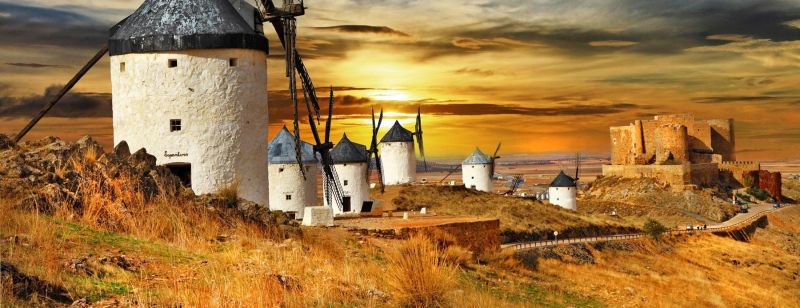Festivals in Spain

SEMANA SANTA
A religious festival, Semana Santa (Holy Week) is a big deal in Spain. It commemorates the Passion of Christ in the Catholic tradition the week before Easter. Each region has its own distinct traditions, but flamboyant parades fill the streets all over the country with festivities beginning on Palm Sunday and finishing with dramatic processions on Maundy Thursday and Good Friday. You’ll see life-sized floats of biblical characters being carried through the streets, people walking with crosses or candles and religious spectacles throughout the week.
LA TOMATINA
The Valencian town of Buñol is bathed red with squashed tomatoes during La Tomatina on the last Wednesday of August. Everyone gathers and an hour-long fight ensues, with tomatoes being smashed before they are thrown to limit injuries. The yearly tradition happens in the town square. It began in 1945, was banned in the 1950s then reinstated in 1957. While it was once a free-for-all, it is now well-regulated and promoted by the tourism board. The mess, as you can imagine, is unbelievable, but it is cleared away by fire truck hoses and, bonus—the citric acid in the tomatoes actually gives everything in the an extra thorough clean.
THE FALLAS OF VALENCIA
For five days and nights in March, the people of Valencia are joined by visitors from around the world for a continuous street party known as “the fire festival.” A bit of history: The festival commemorates Saint Joseph, the patron saint of carpenters. In the Middle Ages, carpenters would hang planks of wood to support their candles while working. These would be burned in the spring to celebrate the end of the darker winter days. They later added clothing to give their planks personality and everything unfolded from there into what it is today—the burning of giant figures (‘ninots’)—often well-known politicians or celebrities. At 8am, brass bands and firecrackers wake the city. Cue days full of processions, fireworks, and plenty of noise. It culminates with the explosion of ninots that have been stuffed full of fireworks in the Plaza Ayuntamiento, the street lights switched off and firefighters in position. The festival has been included in UNESCO’s Intangible Cultural Heritage of Humanity list.
DIA DE LOS REYES MAGOS
Though Santa makes an appearance in many Spanish households these days, traditionally, it was the Three Kings who brought the gifts—not on Christmas, but on January 6th which marks Dia de los Reyes Magos, or “Three Kings Day”, also known as Epiphany. Celebrations begin the day before with a parade re-enacting the arrival of the Three Kings. Children leave a shoe out for the Three Kings and awake in the morning to find the presents near their shoe. Families gather to share a roscón de reyes, a traditional cake for the day. It’s also known as a tortell in Catalonia. Hidden inside is a fave bean and a small king. Whoever gets the king will have good luck for the rest of the year. Whoever gets the bean has to pay for the cake.